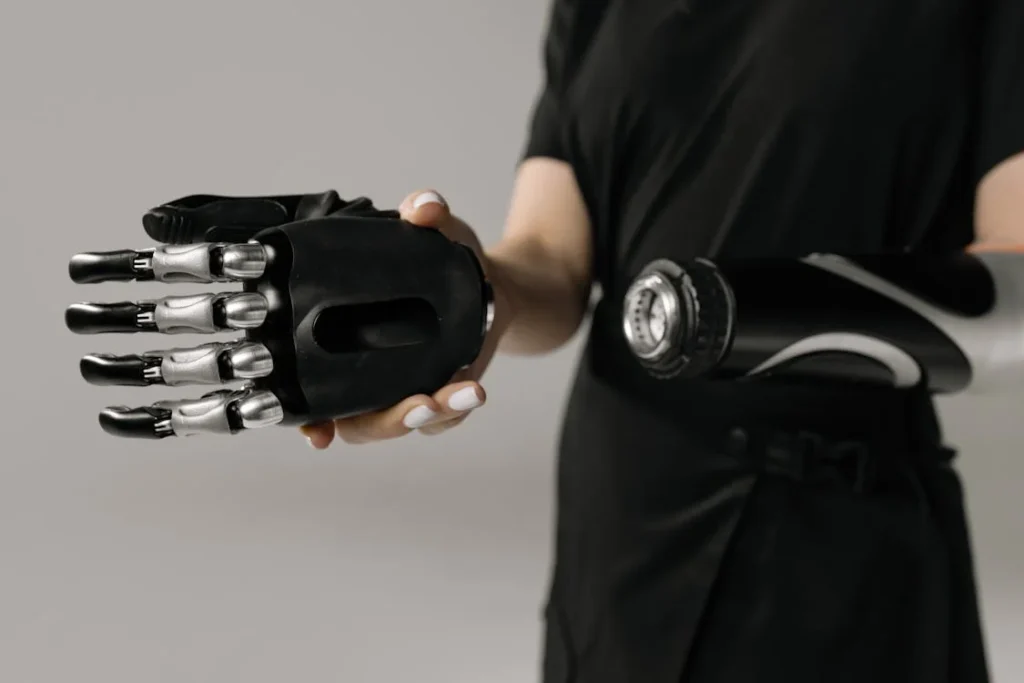Living with one hand in a world designed for two is tough. Everyday things—like opening a jar, tying shoelaces, or carrying groceries—can feel like climbing a mountain. But things are changing fast. Bionic grips are making it possible for people with one hand to do tasks that once felt out of reach. These smart, responsive prosthetic hands are not just about holding stuff—they’re about independence, confidence, and living life fully.
Let’s dive into how bionic grips are making everyday two-handed tasks easier for people with one hand, and how they are reshaping what it means to be independent.
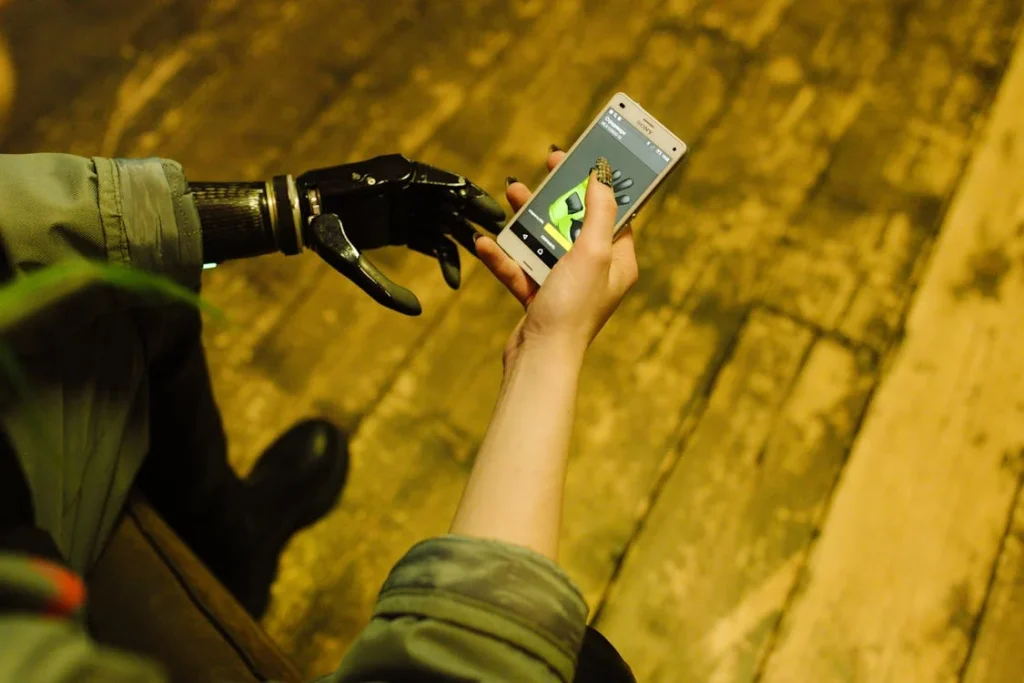
What Are Bionic Grips and How Do They Work?
Understanding the Basics in Simple Terms
A bionic grip is a type of prosthetic hand. But unlike basic prosthetics that just look like a hand or have a simple open-and-close motion, bionic grips are high-tech. They are powered by sensors, motors, and software. Some even respond to signals from your muscles, called EMG (electromyography) signals. When you think about moving your hand, the bionic grip listens and reacts.
Imagine this: you flex a muscle in your forearm, and the bionic hand closes around a cup. Flex it another way, and it switches grip to hold a pen. It’s not magic, but it’s close.
The Grips That Mimic Real Hands
These bionic hands can perform many types of grips. There’s a power grip for lifting heavier items like bags or tools. Then there’s a precision grip for small objects like buttons or coins. Some bionic hands even offer a key grip to hold flat things like cards, or a tripod grip for holding a fork.
The design is based on how human hands move. Engineers and prosthetists study real hand patterns and muscle coordination. They translate these into digital commands so the bionic hand can act almost naturally.
How This Helps With Two-Handed Tasks
Two-handed tasks often rely on teamwork between hands. One hand stabilizes while the other manipulates. With a bionic grip, the prosthetic can take on the stabilizing role—or vice versa. That means you can open a bottle, zip a jacket, or cut vegetables more easily. It’s not about doing everything exactly the same way as before. It’s about finding new ways to do the same things—with the same success.
People who use bionic grips often say they feel “whole” again. It’s not just physical. It’s emotional. It changes how you see yourself, and how others see you.
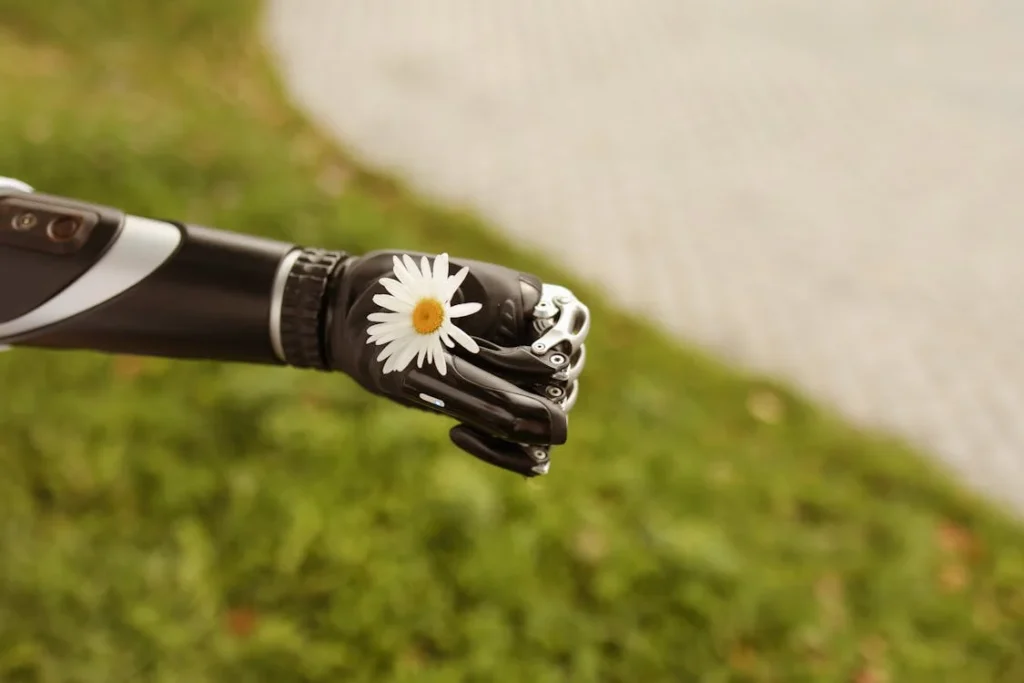
The Challenges One-Handed People Face Daily—and How Bionic Grips Step In
Let’s Talk Real Life
If you’ve ever tried opening a stubborn jar lid with one hand, you know the frustration. Now, imagine trying to tie shoelaces, fold clothes, or peel a banana. Every task becomes a puzzle. And there’s often no one-size-fits-all solution.
In homes, kitchens are full of two-handed tasks—chopping, stirring, holding a bowl while mixing. In offices, typing with one hand or carrying a coffee and files at once can be tricky. Even leisure activities like playing a musical instrument, painting, or gardening become harder. The list goes on.
Why Adaptive Techniques Aren’t Always Enough
People with one hand often learn clever tricks. They use their body, knees, walls, or special tools to help. But even then, tasks can take longer or feel exhausting. There’s also the emotional side—feeling like you’re always adapting, always finding workarounds. That can take a toll.
Bionic grips aren’t about throwing out these skills. They build on them. They offer more freedom. More speed. More ease. They let you do, not just adapt.
Empowerment, Not Just Assistance
Let’s be clear—bionic grips don’t just “help.” They empower. That’s a big difference.
When someone gets a bionic hand with grip control, they’re not just getting a tool. They’re getting back control. Control over their own body, time, and confidence. They no longer have to rely on others as much. They don’t have to wait to get something done. That’s powerful.
And because these devices look high-tech, they often draw curiosity rather than pity. That changes social interactions. Instead of “What happened to your hand?”, you might hear “Whoa, that’s cool! How does it work?” And that’s a huge shift in self-image and how the world treats you.
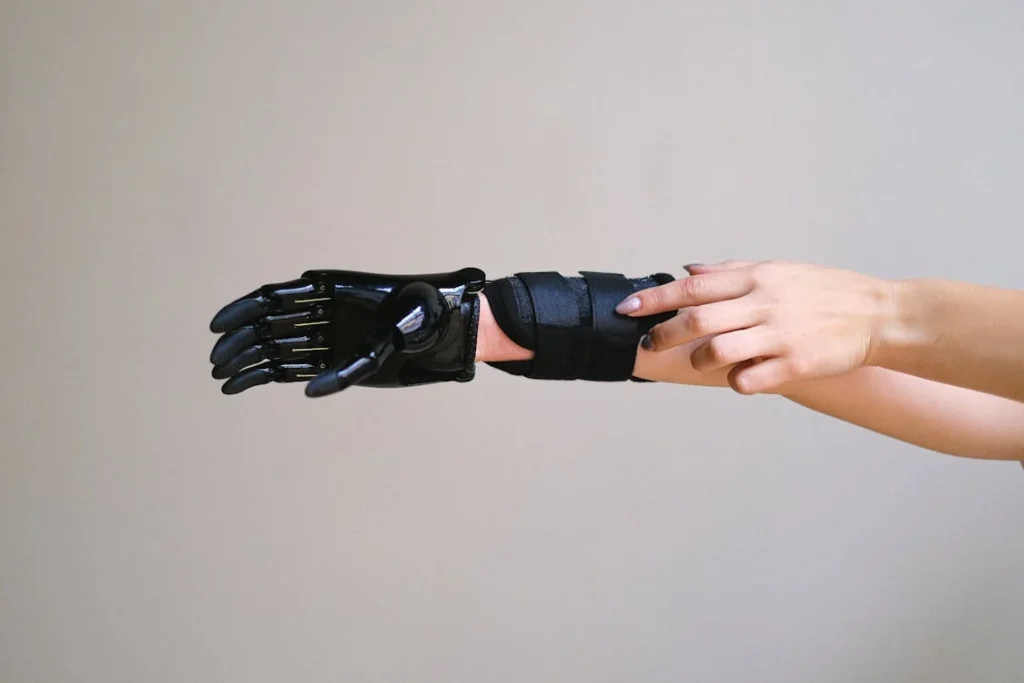
How Bionic Grips Handle Real Two-Handed Activities—Without the Struggle
Opening Jars, Bottles, and Containers
One of the most frustrating things for people with one hand is opening anything sealed tight. Whether it’s a jam jar in the kitchen, a water bottle after a workout, or a container of leftovers, it’s a task that usually needs two steady hands—one to hold, the other to twist.
For years, people have used their knees, their armpits, even their feet to get things open. But these are workarounds. They don’t always work, and they can lead to spills or even injuries.
With a bionic grip, the equation changes. The prosthetic can act as the stabilizing hand. It holds the jar firmly while the natural hand does the twisting. Or, depending on the design and strength of the bionic hand, it might do the twisting itself.
The grip strength can be adjusted. Some bionic systems allow the user to program specific grip patterns for different tasks, making it quicker and more intuitive over time. That kind of customisation makes opening containers not just possible—but normal.
Using Cutlery and Preparing Food
Eating is another everyday task that suddenly becomes complex with one hand. Holding a plate while cutting food, scooping rice with a spoon, or buttering a slice of bread requires coordination that most people take for granted.
The bionic grip helps by giving back that other hand. The user can hold the plate still while slicing with a knife. They can grip a bowl while whisking. They can hold a sandwich with one hand while peeling a banana with the other.
What’s even more helpful is that these grips aren’t rigid. The best bionic hands today offer controlled pressure, meaning they can hold something tightly without crushing it.
So you don’t end up smashing your toast just trying to butter it. The grip feels intelligent, almost like second nature after some practice.
Many users start with simple tasks like picking up a fork or holding a mug, and slowly build their confidence. The more they use it, the more their brain adapts. Muscle memory develops. And soon, these once-tricky actions become automatic again.
Tying Shoelaces, Buttoning Shirts, and Dressing Up
Getting dressed is full of hidden challenges. Zippers, shoelaces, buttons, belts—these are all small parts of clothing, but they can be huge obstacles for someone with one hand. And while there are clothing adaptations, such as Velcro or slip-on shoes, those don’t always suit everyone’s style or needs.
Bionic grips give users the chance to approach dressing in a more typical way. For example, one person might use the prosthetic hand to hold the loop of a shoelace while the other hand finishes the tie.
Another might use it to hold a belt buckle in place while threading it through loops. When it comes to buttons, some bionic grips offer pinch movements that help guide the button through the hole. This takes practice, but it’s not impossible. And the emotional reward of being able to dress independently is enormous.
Even putting on a watch or bracelet becomes less of a hassle. Instead of fumbling with one hand or asking for help, the bionic grip can hold things still, turning a frustrating moment into a smooth routine.
Typing, Writing, and Office Work
In an office setting, the assumption is often that everyone can type with two hands. But for someone with one hand, especially after limb loss, typing can be slow and tiring. Some people use speech-to-text software or adaptive keyboards. But bionic grips open up new possibilities.
The prosthetic hand doesn’t need to do the typing itself. Instead, it supports tasks around it. It can hold documents still, help adjust screen positions, or manage tools like staplers and pens. Some users train their bionic hand to grip a pen and, with time, they can write again.
Others may use it to hold a tablet or phone steady while interacting with it using their natural hand. These subtle roles are just as important as active movement.
In meetings, instead of awkwardly balancing a notepad on their lap or constantly adjusting their setup, users can sit with confidence, knowing their prosthetic can help them stay engaged. Confidence at work doesn’t just come from skills—it comes from the ability to show up and do things without feeling limited or dependent.
Lifting and Carrying Groceries, Bags, and More
We don’t realize how often we carry things in pairs until we lose the ability. Bags, groceries, boxes, books—life is full of things that require two hands. When someone only has one, this becomes an energy-draining task. Bionic grips help spread the load.
Users can carry a bag in each hand, or use the bionic hand to steady a heavy item while opening a door with the natural hand. Some even report being able to carry a suitcase in one hand while rolling another with the other. These aren’t just convenience wins. They’re mental wins. They give people a sense of equality, of being able to navigate the world the same way as everyone else.
This also extends to parenting. Parents with a bionic grip can carry their child with one arm while managing toys or bottles with the other. Tasks like picking up a stroller, opening baby food jars, or buttoning a child’s shirt become less daunting. It allows them to focus more on parenting and less on managing physical limitations.
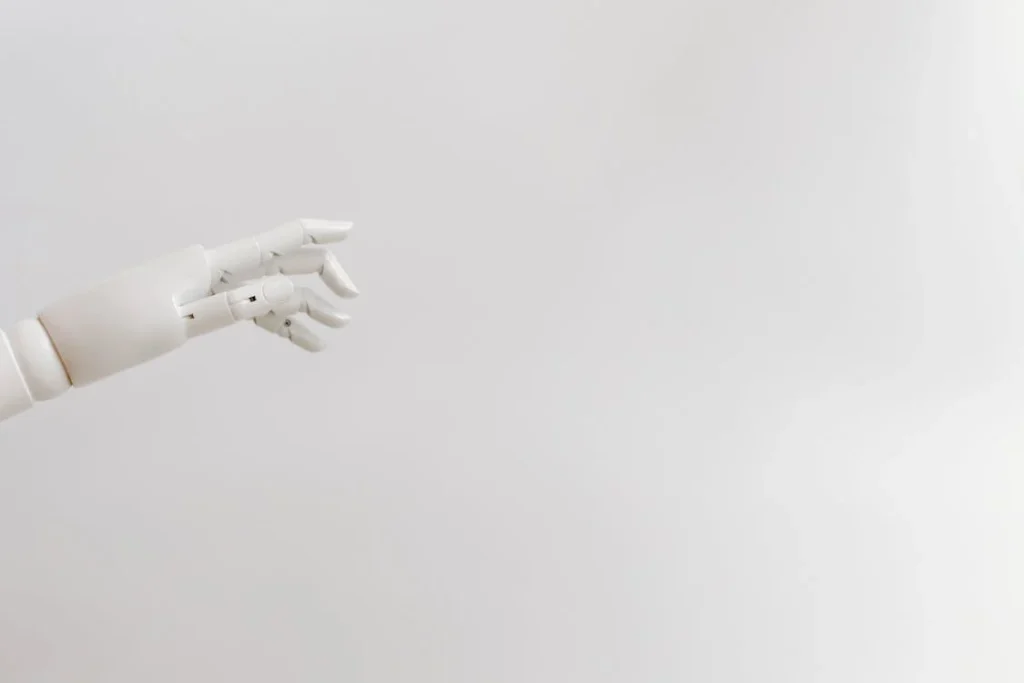
Rebuilding Confidence and Control: The Emotional Side of Using a Bionic Grip
More Than Just Movement—It’s About Self-Worth
There’s something deeply personal about regaining the ability to do things independently. For individuals who have lost a limb or were born with limb differences, there’s often a long emotional journey attached to everyday activities. It’s not just about holding a spoon or carrying a bag—it’s about reclaiming identity, dignity, and confidence.
When a person starts using a bionic grip, they are not just learning how to move again—they are learning how to feel like themselves again. For many, losing the ability to perform two-handed tasks feels like a loss of control.
Suddenly, things that once took seconds now take minutes, and some tasks feel impossible. This can chip away at self-esteem. It can create frustration and even shame, even though it shouldn’t.
But when someone straps on a bionic hand for the first time and feels it respond, that emotion flips. What used to be out of reach is now back within grasp—literally. People begin to feel hopeful again. They feel powerful. Each task completed with the bionic grip becomes a small victory. And these victories build up fast.
Taking Back Social Confidence
There’s also a powerful shift in how people feel in public. Before getting a bionic grip, many individuals feel hesitant to go out to restaurants or attend gatherings. They may avoid situations where help is needed or where others may stare. These worries add layers of anxiety to daily life.
But bionic hands change that dynamic. They don’t just offer functionality—they spark curiosity. Instead of awkward stares, users often get questions like, “Wow, how does that work?” or “That looks like something from a sci-fi movie!” It’s not pity. It’s admiration. This change in perception can be life-changing.
Many users find themselves more willing to go to social events, participate in community activities, or even explore new hobbies. Some start hiking again, taking up photography, cooking, or learning a new instrument. The bionic hand doesn’t just bring back old abilities—it unlocks new possibilities.
Reducing Dependence on Others
One of the most frustrating parts of living with only one functional hand is needing to ask for help all the time. Whether it’s tying shoes, zipping a backpack, or opening a package, the constant need for assistance can start to feel like a burden. This often leads to feelings of guilt or even withdrawal from social interactions.
The beauty of the bionic grip is that it restores a sense of self-reliance. Tasks that once required help can now be done solo. This change might seem small to outsiders, but to the user, it’s everything. It means being able to take care of your kids without asking your partner for help every five minutes. It means not having to wait for someone to help open your lunch at work. It means getting through the day on your own terms.
This reduction in dependence is more than practical—it’s emotional fuel. It rebuilds trust in oneself. And over time, that trust spreads. Confidence at home turns into confidence at work. Confidence at work turns into leadership. It’s a ripple effect that starts with something as simple as a grip.
Supporting Mental Health and Healing
Mental health plays a big role in physical recovery. After limb loss or trauma, it’s common to experience depression, anxiety, or body image issues. People might grieve their old routines, their old body, or their old lifestyle. And while therapy and support groups are essential, having a functional prosthetic like a bionic grip adds another layer of healing.
There’s something powerful about action—about doing. Being able to open your own door, carry your own groceries, or tie your own shoelaces again can provide a deep sense of progress. It turns healing into something visible and tangible. Instead of being stuck in memories of what’s lost, users begin to focus on what’s possible now.
Some users describe the first time they used a bionic hand as a “light switch moment.” For the first time in weeks or months, they saw a future that wasn’t about limits—it was about options.
Encouraging Movement and Better Body Alignment
Here’s something often overlooked: when someone only uses one hand, their body overcompensates. They put more pressure on the shoulder, arm, and wrist of their functioning side. Over time, this can lead to strain, pain, or injury. It also affects posture and balance.
With a bionic grip, movement becomes more balanced again. People can distribute weight more evenly. They can walk without awkward tilts or shoulder strain. This reduces long-term wear and tear on the body and supports healthier movement overall.
Plus, being able to move both arms in rhythm—even if one is a prosthetic—can help with balance while walking or running. It restores the body’s natural flow. This doesn’t just feel better. It looks better, too. And that can boost confidence in ways that are hard to measure but easy to feel.
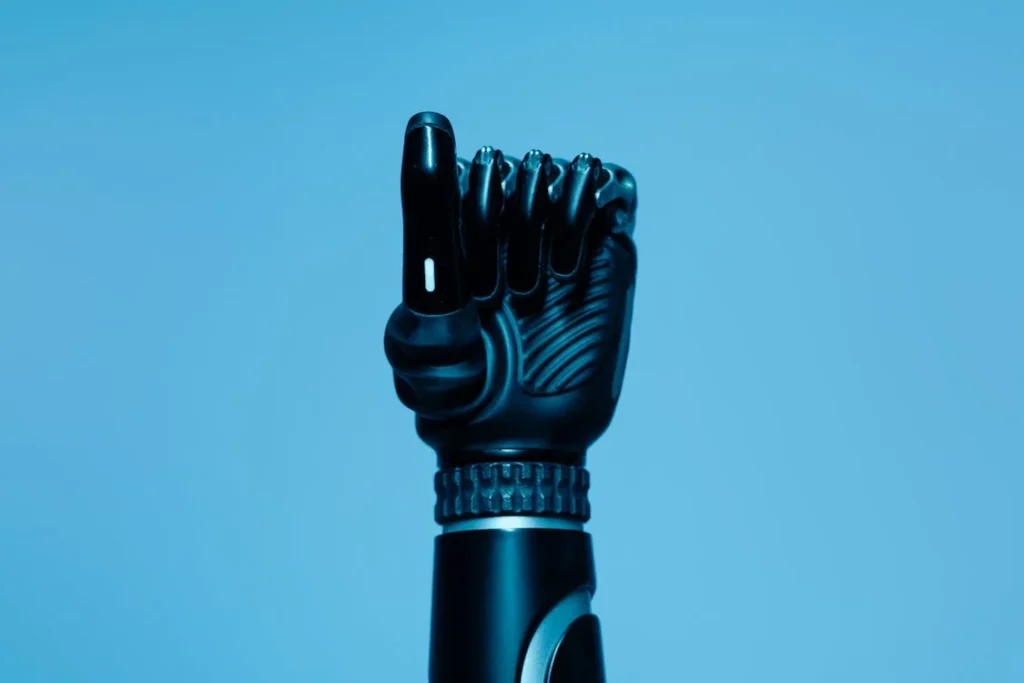
Training the Brain and Body: How Users Learn to Master Bionic Grips
It Starts With Trust—Between Mind and Machine
The idea of controlling a hand that isn’t “your own” can feel strange at first. There’s a learning curve, and it’s very real. But the human brain is incredibly adaptable. When someone begins using a bionic grip, their brain quickly starts rewiring itself to include this new tool in its map of the body.
Scientists call this “neuroplasticity.” But you don’t need the technical term to understand what’s happening. You just need to see how quickly users go from thinking “this is weird” to “this is mine.”
That first moment—when the hand responds to a thought or a muscle twitch—is powerful. It’s the start of a relationship between brain and bionic hand. At first, every action requires focus. But over time, just like learning to drive or ride a bike, the motion becomes more natural. The brain learns, the muscles adjust, and suddenly the hand becomes an extension of the self.
This trust doesn’t come overnight. But with practice, it forms the foundation for all the complex tasks a user will do with their new bionic grip.
Muscle Signals and the Magic Behind Movement
Most bionic grips today use EMG signals—tiny electrical pulses that your muscles naturally give off when they try to move. Electrodes placed inside or on the skin of the residual limb pick up these signals and send them to a small computer inside the prosthetic. That computer decides what movement is being asked for, and then tells the motors inside the hand what to do.
It sounds technical, but the beauty lies in how smoothly it can work. Think about wanting to pick up a spoon. You don’t have to overthink the process. You just flex your muscle the way you used to. The bionic hand reacts, gripping the spoon gently, ready for use. And if you’re trained well, it feels no different from using your biological hand.
Some prosthetics also use pattern recognition. This means the software learns which signals are tied to specific movements. It then gets better over time at understanding the user’s intent. As the grip system becomes smarter, the user’s confidence grows—and so does their efficiency.
The Role of Occupational Therapy and Rehab
No one is handed a bionic grip and expected to master it alone. Occupational therapists (OTs) are a huge part of the journey. They guide users step by step, starting with basic movements and gradually working toward complex activities.
In early sessions, users might learn how to activate simple grips—like open, close, or pinch. Then, they move on to functional tasks like holding a cup, opening a zipper, or slicing bread.
Therapists often create custom routines based on a user’s lifestyle. For someone who loves cooking, sessions might include holding a whisk or opening spice jars. For a student, it might be writing, using a laptop, or flipping through a textbook.
This hands-on guidance matters because it builds skills in a structured way. It also offers emotional support. Users can ask questions, try new things in a safe space, and celebrate progress. And when setbacks happen—as they sometimes do—therapists help users stay motivated and focused.
Daily Practice and Real-World Learning
While therapy sessions are important, most learning happens outside the clinic. That’s where real life kicks in. Using the bionic grip during daily routines reinforces new habits. The first time a user makes a sandwich on their own or brushes their teeth without help, something shifts. Those everyday moments become milestones.
Many users develop little rituals—using their prosthetic to hold their phone while scrolling, to carry their lunch, to open doors. Each of these actions strengthens the bond between user and device. Over time, it stops being a tool and starts feeling like a part of the body.
And here’s something beautiful: every user finds their own rhythm. Some learn fast, others take time. Some prefer detailed control, while others focus on basic functionality. There’s no one right way to use a bionic grip. The right way is the one that works for the person using it.
Staying Motivated Through Frustration
Let’s be honest—there are hard days. Some tasks don’t click right away. The hand might respond too slowly. The grip might not hold the item just right. Technology has come a long way, but it’s not perfect. And it can be frustrating when things don’t go smoothly.
That’s why support is key. Whether it’s from therapists, family, friends, or even online communities, having people to talk to makes a huge difference. Hearing from others who’ve faced the same struggles—and found solutions—keeps users going.
And the progress is worth it. Even small wins, like zipping up a jacket or carrying a tray, add up. They give users proof that they’re moving forward, that they’re getting better, and that life with a bionic grip is full of potential.
Adapting to Newer Versions Over Time
Technology never stops evolving. As bionic grips get better, users may upgrade to newer models. This can feel like learning all over again, but it’s usually easier the second time around. Once the brain has learned to work with one device, adapting to another becomes faster. It’s like switching from one smartphone to another—there’s a learning curve, but the basic skills carry over.
Manufacturers, including us at Robobionics, often provide detailed guides and training for each new model. Some even offer remote coaching sessions. These upgrades aren’t just about better motors or cooler designs. They’re about offering even more freedom—better grip strength, faster response, more natural movement. And when users are ready, these changes can open up new levels of independence.

The Future of Bionic Grips: Smarter, Simpler, and More Human
Beyond Function—Designing for Emotion and Everyday Life
Up to now, we’ve talked about what bionic grips can do physically. But there’s something just as important: how they fit into a person’s whole life. Technology that works is great. But technology that feels right—that’s the real breakthrough. Today’s best bionic grips are not only tools; they’re companions in daily life. But the future promises something even better.
At Robobionics, we’ve been working closely with users across India and beyond to rethink how bionic grips fit into people’s routines. From the way the hand feels when resting, to how it responds when someone’s in a hurry, the goal is to build something that blends into life—not interrupts it. A grip that understands your pace, your priorities, even your preferences. It’s no longer just about strength or speed. It’s about ease.
Soon, users may not need to manually switch grip modes or spend minutes recalibrating sensors. Smart systems powered by machine learning will learn patterns—how you hold your toothbrush every morning, how you grip your coffee mug, how your hand moves when you’re stressed or relaxed. The prosthetic will adapt in real time, almost like it’s thinking with you. That’s not science fiction anymore. That’s where we’re headed.
The Role of AI in Creating Smarter Hands
Artificial intelligence is starting to play a bigger role in how bionic hands think and respond. Right now, users typically use a small number of muscle signals to trigger grip patterns. But AI systems can analyse those signals more deeply. They can learn to predict what the user wants to do—not just what they’re currently doing.
This means your bionic grip could soon recognise that you’re reaching for a paper cup and automatically switch to a gentle touch. Or that you’re carrying shopping bags and need more strength. It might sense when your muscles are tired and ease up the tension. Think of it like a co-pilot that’s always a few steps ahead.
We’re testing systems that adjust grip modes based on time of day, location, or even voice command. One day, a user could say “typing mode,” and their hand will adjust into the perfect form for keyboard use. These little features add up to something big: a hand that doesn’t just obey—it understands.
Making Bionics More Affordable and Accessible
Let’s face it—bionic technology can be expensive. That’s one of the biggest barriers for people who need it. At Robobionics, we’ve made it our mission to change that. We’re working hard to bring high-quality, responsive prosthetics to more people at prices that are fair and realistic. We believe independence shouldn’t come with a luxury price tag.
This means using smart materials, open-source software, and modular parts that can be repaired or replaced locally. It means training clinics across India to handle fittings and servicing without having to ship everything to big cities. It means translating user guides into regional languages, so nobody is left behind just because of where they live or what they speak.
In the future, we want bionic grips to be as normal as eyeglasses. Simple, reliable, customisable—and available to anyone who needs them. Whether you live in a metro like Mumbai or a small town in Kerala, you should have access to world-class bionics.
Blending Beauty with Engineering
There’s another part of the bionic experience that’s often overlooked: how it looks. While function is the main focus, aesthetics matter too. A person’s hand is one of the most visible parts of their body. So the prosthetic shouldn’t just work well—it should look and feel like something they’re proud to wear.
Today’s users can choose from different colors, textures, and finishes. Some want their hand to look as close to their natural skin as possible. Others want it to stand out—sleek black carbon fiber, chrome fingertips, or even designs inspired by pop culture. What matters most is choice. It’s not about hiding the prosthetic. It’s about owning it.
The future will bring even more options—interchangeable covers, wearable tech add-ons like smartwatches that sync with the grip, even skin sensors that change color based on mood or temperature. The line between fashion and function will blur, and that’s a good thing.
A Shift in Society: From Disability to Capability
Perhaps the biggest change bionic grips are helping create isn’t in the lab—it’s in the world. As more people wear and use them in public, perceptions are changing. What was once seen as a limitation is now being viewed as innovation.
We’re seeing kids point and smile instead of stare. We’re seeing job interviews where the prosthetic sparks a conversation about resilience, not restriction. We’re seeing models with bionic arms on magazine covers, and athletes breaking records with the help of advanced grips. This isn’t about being “inspirational.” It’s about being visible, capable, and completely normal.
In many ways, bionic grips are not just redefining how individuals move. They’re redefining how society sees ability.
Conclusion
Living with one hand doesn’t mean living with limits. Bionic grips are transforming the way people move, act, and feel—turning daily obstacles into everyday wins. From opening jars and dressing independently to building confidence and regaining control, these advanced prosthetics are more than devices—they’re life changers.
At Robobionics, we’ve seen firsthand how a well-fitted, intuitive bionic hand can empower individuals of all ages. Whether it’s a child learning to tie their shoes or an adult returning to work with renewed confidence, bionic grips offer more than function—they restore freedom.
As technology evolves, so do the possibilities. With smarter, more affordable, and more human designs on the horizon, we’re not just making hands—we’re shaping futures.
Because everyone deserves the power to live fully. And with the right grip, they can.



